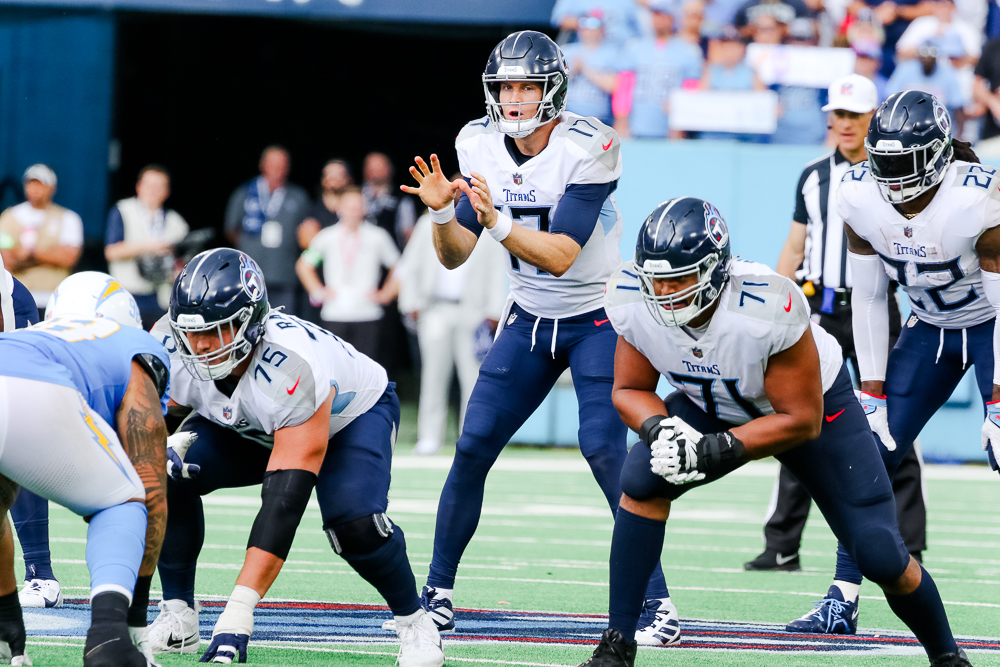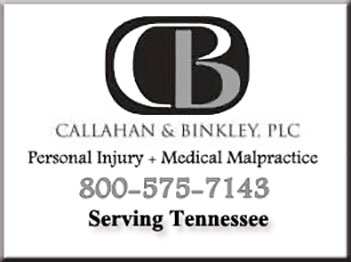By JAKE DOWNARD
Jake Downard is a law student who creates NFL and NBA content focused on analytics on Twitter as @JakeAndBall. He also works with fanspo.com.
In my previous pieces, I’ve said it does not take a spreadsheet to identify clear issues. You would be hard-pressed to find anybody who watches Titans games and does not believe the offensive line is a massive problem. It jumps off the TV as we sit at home on Sunday and watch the games, it is a clear concern when we sit in our seats at Nissan Stadium and see Joey Bosa winning on the edge over and over, and it scares the hell out of fans as they re-watch highlights of their QB of the future.

As the Titans cross over into the second half of the season with a record of 3-6, what better time to get into an in-depth review of the offensive line? [Unlocked]
In Week One, the Titans traveled to New Orleans. There was a lot to be excited about heading into the Big Easy. I was looking forward to seeing DeAndre Hopkins’ debut as a Titan, Treylon Burks and Chig Okonkwo’s sophomore seasons kick-off, and the impact of guys like Arden Key and Azeez Al-Shaair on a defense that struggled quite a bit in 2022.
My No. 1 concern, however, was the offensive line, and I came out of the game against a tough New Orleans front cautiously optimistic about the newly assembled group. PFF graded Chris Hubbard, Daniel Brunskill and Peter Skoronski as top 20 players at their respective positions, Aaron Brewer finished up around average among centers, and Andre Dillard struggled, but graded out just slightly below average. All in all, the Titans allowed two sacks, three quarterback hits, and twelve pressures in 43 dropbacks. Against a really stout New Orleans front, Ryan Tannehill was pressured on 27.9% of his dropbacks.
During prep for Week Two, the Titans lost Skoronski due to an emergency appendectomy, and the offensive line was around league average. Despite giving up pressures on 32.2% of dropbacks, they held their own against a Chargers front led by Joey Bosa and Khalil Mack. They bought Tannehill time in key moments and Dillon Radunz, Dillard and Hubbard all graded out really well as run-blockers. Again, nothing to write home about, but no reason to believe the offensive line was bottom-three in the NFL…right?
In Cleveland during Week Three, the wheels fell off. What seemed to be an average offensive line traveled to Northern Ohio and chaos ensued. Jim Schwartz, Myles Garrett and Za’Darius Smith showed the world just how much of a weakness the Titans offensive line is. No starter on the offensive line graded about 61.0 on PFF, the unit allowed six sacks and Tannehill was pressured on 5) percent of his dropbacks.
The Titans then returned home in Week Four, and the Jekyll and Hyde act continued. The offensive line allowed pressures on just 28.5 percent of Tannehill’s dropbacks, the offense had success in the run game, and the team trounced a reeling Bengals squad.
However, since Week Four, the Titans have had one truly respectable offensive line performance that came against Arthur Smith’s Falcons in Week Eight, coming off a bye, with a rookie quarterback under center playing out of his mind.
This Titans team goes as the offensive line goes. When the offensive line allows pressures like a turnstile, Tennessee is a terrible football team.
We see the impact of poor offensive line play spill over to other aspects of the team. The quarterback takes a sack on first down, Derrick Henry gets stuffed on second down, screen pass on third down, punt on fourth down, and a defense that is already short on depth, trots right back onto the field, gassed and unable to get to the opposing quarterback in time to make a difference. This scenario is all too familiar, and it is not a stretch to say that poor offensive line play is the difference in 2-3 games this season.
Through the first nine games of the season, here is where each Titans’ starter is ranked by PFF at their respective position as a pass-blocker:
- Andre Dillard: 59th of 64
- Peter Skoronski: 31st of 61
- Aaron Brewer: 22nd of 32
- Daniel Brunskill: 24th of 61
- Chris Hubbard: 34th of 64
Here is where each of those players ranks as a run blocker in 2023:
- Andre Dillard: 29th of 64
- Peter Skoronski: 38th of 61
- Aaron Brewer: seventh of 32
- Daniel Brunskill: 29th of 61
- Chris Hubbard: 41st of 64
One of my personal favorite offensive line figures to observe and look at is pressures. Who is responsible for their quarterback rushing the ball out? Who is preventing the quarterback from being pressured? Here is how PFF has charted pressures through nine weeks of the season:
- Andre Dillard: 36 pressures (most in the NFL)
- Peter Skoronski: 16 pressures (T-23rd most of 60)
- Aaron Brewer: 18 pressures (T-sixth most of 32)
- Daniel Brunskill: 16 pressures (T-23rd most of 60)
- Chris Hubbard: 17 pressures (40th most of 63)
Whether you are watching the tape or looking at the numbers, Dillard can pretty easily be identified as the weakest link of the offensive line at the midway point of the season. On the opposite side of the line of scrimmage, Hubbard’s numbers do not look too bad, but when you watch the tape, you see that he often has help by way of a chip from a tight end or running back. The duo of Dillard and Hubbard have allowed more sacks (14) than any duo of tackles in the NFL in 2023. If I was a betting man, I’d wager that both will be replaced in the offseason.
The interior, while not world-beaters, has been relatively average on tape and by the numbers. Skoronski looked like an All-Pro guard in Week One and has since taken a step back, but I believe that is attributable to 1) the fact that he is a rookie, and 2) the emergency appendectomy.
Brunskill has experienced ups and downs, but he’s been a pleasant surprise in my opinion, especially considering he is the 20th highest-paid RG in the league, per Over the Cap.
Brewer is the trickiest player to evaluate. His numbers are all over the place. He’s been consistently solid as a run-blocker, but he’s been a bottom-10 center on dropbacks, and he’s allowing the sixth most pressures in the league at his position. As the 19th-highest-paid center in the league, he objectively is not overpaid, but his weekly size disadvantage makes it hard to envision him as the long-term answer at center. Athletically, he is as good as it gets, but I would imagine the Titans will explore replacements this offseason due to Brewer’s inherent limitations in stature.
Unfortunately, there are no replacements readily available on the roster that will make this offensive line formidable for the remainder of the 2023 season. Radunz has shown flashes at tackle, but he was just as bad as Dillard and Hubbard against the Buccaneers on Sunday. Nicholas Petit-Frere is on IR due to a shoulder injury, and the rest of the roster is made up of mostly practice squad options. Jaelyn Duncan, who was widely considered a project entering the NFL Draft, may get a chance to contribute. I do think he deserves a shot, and he has graded out better than the rest of the tackles in limited snaps, but it is hard to expect a sixth-round rookie to be effective in an era of the NFL loaded down with high-level defensive players.
Fortunately, the Titans have the most cap space in the NFL this offseason, and they have their first and second-round picks, so let’s evaluate the options that they could look into this spring.
As it stands through ten weeks of the season, the Titans currently hold the seventh and 40th overall picks in the 2024 NFL Draft. NFL Mock Draft Database compiles data from more than 200 mock drafts and 60 big boards, and here are some key PFF numbers on the 10 offensive tackles they have in their consensus top 40:
1. Olumuyiwa Fashanu (PSU): 70.1 RBLK Grade, 88.2 PBLK, 0 sacks, 10 pressures.
2. Joe Alt (ND): 79.7 RBLK, 93.4 PBLK, 1 sack, 4 pressures.
3. J.C. Latham (BAMA): 74.8 RBLK, 80.2 PBLK, 1 sack, 9 pressures.
4. Amarius Mims (UGA): 64.9 RBLK, 81.4 PBLK, 0 sacks, 1 pressure (3 GP).
5. Graham Barton (DUKE): 68.7 RBLK, 73.3 PBLK, 2 sacks, 9 pressures.
6. Taliese Fuaga (ORE ST): 93.4 RBLK, 76.1 PBLK, 0 sacks, 10 pressures.
7. Patrick Paul (HOU): 69.3 RBLK, 95.9 PBLK, 0 sacks, 5 pressures.
8. Tyler Guyton (OU): 61.7 RBLK, 71.2 PBLK, 0 sacks, 12 pressures.
9. Jordan Morgan (AZ): 73.9 RBLK, 89.4 PBLK, 2 sacks, 13 pressures.
10. Kingsley Suamataia (BYU): 49.4 RBLK, 81.3 PBLK, 2 sacks, 17 pressures.
Fashanu and Alt are widely considered the clear top two options in the draft, and I cannot imagine either slip outside of the top 10, but there’s still a ton of time between now and April. The idea of either Alt (6’8, 322 lbs.) or Fashanu (6’6, 317 lbs.) alongside Skoronski protecting Will Levis’ blindside is enough to get any fan excited.
Latham and Mims may be more realistic first-round options considering the strength of the Titans' remaining schedule, and I think Patrick Paul could end up being a big riser in April. Regardless, it is encouraging that this is considered to be a talented, deep tackle class, and I would imagine Ran Carthon and Mike Vrabel will do more than their due diligence on these long-term options this offseason. At the center position, Sedrick Van Pran (UGA) could be a name to watch on Day 2. The 6’4, 311-pounder has graded out really well as a run blocker and pass blocker, allowing just six pressures in 362 dropbacks this season.
The free agency market for offensive linemen seemingly becomes smaller and smaller every offseason. Simply put, there are not enough good offensive linemen in the NFL right now, and NFL teams know that. Each year, it becomes more difficult to go out and sign good options on the offensive line. With the majority of formidable options that could potentially enter free agency either 1) likely to land extensions, or 2) entering the twilight years of their careers, it becomes even more important for the Titans to land their long-term options by way of the draft.
![]() Could the Titans bring in a RT that can hold his own in free agency? Sure. Should you bank on them landing a stud replacement for the foreseeable future simply because they are expected to have the most cap space in the NFL? Probably not. Daniel Brunskill has been serviceable and was landed on a team-friendly deal, but for every Brunskill, there are seemingly 10 Dennis Daley’s waiting for a call. Ask any front office in the NFL.
Could the Titans bring in a RT that can hold his own in free agency? Sure. Should you bank on them landing a stud replacement for the foreseeable future simply because they are expected to have the most cap space in the NFL? Probably not. Daniel Brunskill has been serviceable and was landed on a team-friendly deal, but for every Brunskill, there are seemingly 10 Dennis Daley’s waiting for a call. Ask any front office in the NFL.
With a potential franchise quarterback on the roster and a ton of work to do on the offensive line, the second offseason for Ran Carthon is a massive test. The premium draft capital is there, and the cap space is there. With a solid interior that should only get better as Skoronski develops, offensive tackle is the most important position the Titans have to address this offseason as they turn the page to a new chapter of franchise history.










You are not authorised to post comments.